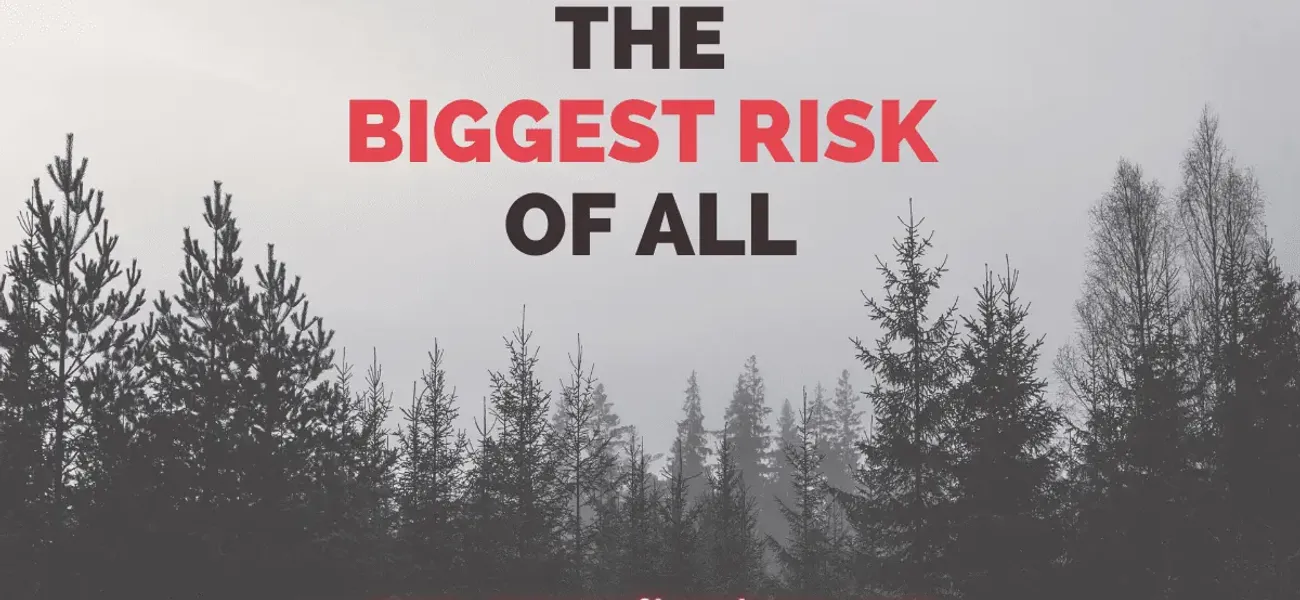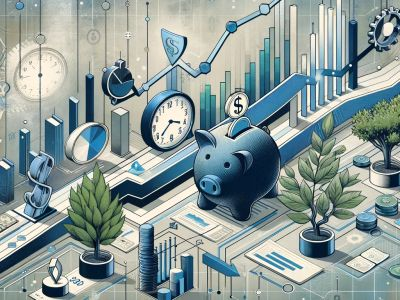
The Biggest Risk of All
In the personal finance community we often talk about risks. The risk of running out of money in retirement; the risk of picking the wrong investment or getting the timing wrong; sequence of return risk; the risk of losing our job during the accumulation phase; leverage risk – you name it.
The perceived level of danger that comes with these risks often leads to fear. This fear in turn leads to phenomena like the famous ‘one-more-year syndrome’.
We try everything we can to minimise these risks, calm our fears and be “safe”. However, we often ignore a risk that we should all pay a lot more attention to: the biggest risk of all.
We Are All Terrible At Managing Risk
As humans, we are terrible risk managers, especially when it comes to risks we can’t easily quantify and that have fears and emotions attached to them. We overestimate the impact of some risks and underestimate that of others.
The truth is that no decision we’ll ever take is risk-free. We just have to pick and choose which risks we are willing to take.
Investing comes with risk. We all know that. However, in the FI community, we acknowledge that not investing is even more dangerous long term, so we are happy to accept the risk that comes with investing.
But what about the risks we can’t display in a pretty spreadsheet? Like failing to make positive changes in our life when we get the chance? What is the risk of holding on to a job we don’t like “just for another year or two” once we don’t need it anymore to be financially secure? This is where things get complicated.
These kinds of decisions also come with risk; a lot of risk actually.
When we delay happiness and decide to stick it out just one more year to “be safe” or “build some more buffers”, even when we know we have enough, we unwittingly prioritise the risk of running out of money over another risk: running out of time. And that, my friends, is the biggest risk of all.
Once we have reached a level of financial independence that allows us to start making changes in our lives – like working less, semi-retiring or taking a career break for instance – the fear gets real for many of us. We suddenly think our plan is too risky. We come up with a million reasons why now is not the time or why we just need a little bit more money before we can take the leap. We are worried we don’t have enough.
All the while, we tend to ignore the biggest risk of all – running out of time – hiding in plain sight.
Hiding In Plain Sight
In a recent article, we used the Rich, Broke or Dead Calculator to show the effect of flexibility and some active income on our success chances in retirement. The calculator produces pretty graphs like this:
Today, I’ll use the calculator to illustrate the very real risk of running out of time long before we get to use all the wealth we’ve accumulated.
For the scenario we’ll discuss in this article I used an allocation of 95% stocks and 5% cash, a retirement age of 40 and a retirement “end date” of age 100. I picked the mortality table for females with average health. I used the classic 4% rule without any flex or additional income. This is your run-of-the-mill FIRE scenario. Note: I discussed the calculator and how it works in more detail here.
The green area shows various levels of “enough” and “more than enough” – i.e. we won’t run out of money. The small red area is what everyone is so worried about – running out of money in retirement. In the scenario in the chart above, we have a 10% chance of running out of money sometime before age 100.
To simplify things, I’ve removed the various shades of “enough” (the green areas of the chart). The chart now only shows one shade of green for “success” (meaning we don’t run out of money in retirement):
The FI community goes to extreme lengths to avoid ending up in the little red area of the chart. We overanalyse, overthink, over-save and overwork. As a result, we often get stuck in what I call the “red zone” of the Financial Independence Spectrum.
The risk of running out of time (aka mortality risk) is displayed as the grey area. In my opinion, this is the area we should actually worry about. In the scenario I used, the risk of dying keeps creeping up year after year, and the risk of running out of money doesn’t even come into play until about 25 years after the retirement date.
This means that up until age 65, it is 100% more likely that we will die than that we’ll run out of money in any given year. And after that, the mortality risk just keeps going up and up and up. The likelihood of running out of time never overtakes the likelihood of running out of money. And at some point, the likelihood that we are dead is higher than that we are alive, whether we are broke or not.
Our risk of dying is never 0%, even in our 30s, 40s and 50s, when most aspiring early retirees believe they are “safe”. Think about that.
The Numbers Don’t Lie
Let’s have a closer look at the chart.
When we retire at age 40, our risk of being broke is, of course, 0%, and our risk of being dead is 0.1%. So far, so good.
At age 50, there is still a 0% chance we’ll be broke, but a 2.3% chance we’ll be dead – 23 out of 1000 women of similar health are dead by this age. Also, note that there is a whopping 97.7% chance that we’ll be alive and kicking with plenty of money.
Fast forward to age 60. Still a 0% chance of being broke, but a 7% chance of being dead:
Now let’s look at age 66. This is the first time there is a real chance we might be broke – a 1% chance. Which is still nothing compared to the 11.8% chance we’ll be dead.
By age 75, our chances of success (defined as alive and not broke) have decreased to 70.7%. There is a 4.2% chance we’ll be broke and a 25.1% chance we’ll be dead.
At age 85, it’s more likely than not that we’ll be dead (a 54.4% chance), but there is still only a small risk we’ll be broke (4.6%).
And finally, at age 95, we’ll most likely be dead (a 90.5% chance), and it’s improbable I’ll be broke (1% chance).
I repeated this little experiment with various withdrawal and flex rate assumptions, and the results were very similar. We would have to withdraw over 5% per year without any flexibility to our spending and post-retirement income before the chances of being broke become greater than being dead at any point along the journey. And even then, this would only be the case for a few years of our retirement.
Conclusion
I hope this article got you thinking about the risk-reward trade-offs we all make on the journey to FI, whether we want to or not. There are no 100% safe options. Life is full of uncertainties.
I am definitely not trying to say that we should give up our pursuit of financial independence and only live in the here and now. However, I think it is important that we regularly check in with ourselves and ensure we are not delaying living our best lives unnecessarily.
Remember, tomorrow is not guaranteed for any of us. Make sure you are intentional when you choose which risks you are willing to take.
How do you balance the risk of running out of money with the risk of running out of time?


